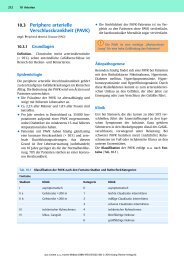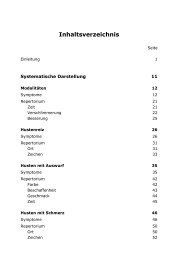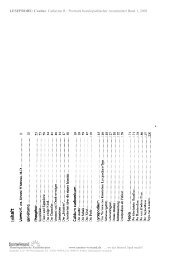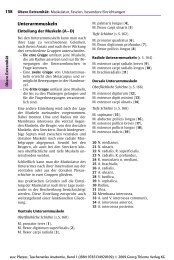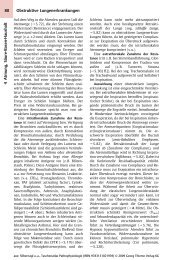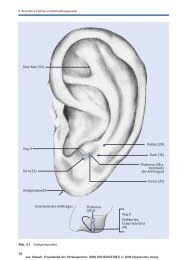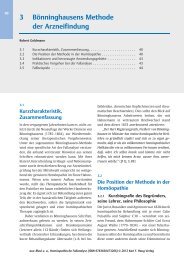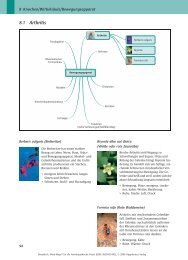alphabetical index of plant families and groups - Sunrise Versand
alphabetical index of plant families and groups - Sunrise Versand
alphabetical index of plant families and groups - Sunrise Versand
You also want an ePaper? Increase the reach of your titles
YUMPU automatically turns print PDFs into web optimized ePapers that Google loves.
Aralia nudicaulis<br />
Aralia nudicaulis L. Wild sarsaparilla; false sarsaparilla; American sarsaparilla.<br />
Native range: North America. Habitat: Moist or dry woodl<strong>and</strong>s, thickets, riparian<br />
areas, prairie or bog edges. Widespread, dominant understorey species throughout<br />
the boreal coniferous <strong>and</strong> mixed-wood forests. Rhizomatous, herbaceous<br />
perennial, to 70 cm high, forming extensive colonies. Stemless, flowering stems<br />
<strong>and</strong> leaves arise directly from the rhizome; nudicaulis means naked stem. Leaves<br />
ternate, each division 3–5 pinnately divided; leaflets lanceolate-elliptic, finely<br />
toothed <strong>and</strong> about 15 cm long. Leaves go dormant in summer before fruits ripen.<br />
Dioecious; flowers greenish-white, in globose umbels. Fruit a bluish-black drupe.<br />
‘Possesses alterative properties <strong>and</strong> is used in decoction or syrup as a substitute<br />
for sarsaparilla in all cases where an alterative is required. It is likewise used in<br />
pulmonary diseases. Externally, a decoction <strong>of</strong> it has been found beneficial as a<br />
wash in zona [shingles] <strong>and</strong> in indolent ulcers.’ [King 1898]<br />
� No symptoms in MM.<br />
ARALIA RACEMOSA<br />
Scientific name Aralia racemosa L.<br />
Common names American spikenard. Life-<strong>of</strong>-man. Small spikenard.<br />
Petty-morel.<br />
Family Araliaceae – order Apiales.<br />
Homeopathy Aralia racemosa – Aral.<br />
Botanical Features<br />
� Rhizomatous, herbaceous perennial, with few-leaved stems, sometimes becoming<br />
woody in basal part.<br />
� Native range: Eastern North America.<br />
� Habitat: Rich wooded slopes, ravines, shaded moist ledges <strong>and</strong> bluffs.<br />
� Leaves ternate or 1–2-pinnate, rather stiff, both surfaces green.<br />
� Flowers greenish-white, in umbels 12–30 cm across.<br />
� Fruit a brown to purple drupe.<br />
Medicinal Uses<br />
‘Like other close relatives <strong>of</strong> ginseng, spikenard has shown an ability to stimulate<br />
phagocytosis in white blood cells, increase interferon synthesis in infected<br />
cells, <strong>and</strong> increase the capacity for metabolic stress in rats. 9I haven’t done too<br />
much counselling with rats, but I can vouch for its helping human beings.] This<br />
function <strong>of</strong> spikenard is sometimes adaptogenic, increasing mobilisation but<br />
decreasing the metabolic costs <strong>of</strong> stress responses. This may mean [the jury is still<br />
out] that moderate amounts <strong>of</strong> the tincture or tea on a regular basis can<br />
strengthen someone with metabolic or chronic disease, whatever the type.<br />
‘More prosaic but more predictable, spikenard is a first-class medicine for the<br />
initial stages <strong>of</strong> bronchitis, pneumonia, bronchorrhoea . . . all that stuff we<br />
© Saltire Books Ltd<br />
Family ARALIACEAE 495



